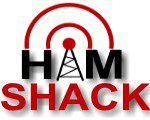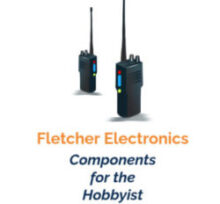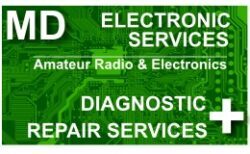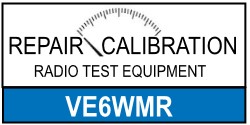
question specific learning
Transforming Knowledge Into Understanding
Hamshack.ca is completing the fully updated Basic Amateur Radio Course, built from the ground up to match the latest ISED syllabus and question bank. The new course is now in the final QA and testing stage, with launch expected shortly. It features clear, easy-to-follow lessons, embedded answers, interactive quizzes, real-world examples, and full mobile compatibility — everything you need to prepare confidently for your Basic Qualification.
The Advanced Amateur Radio Course remains fully available and unchanged. It continues to use the proven QSL (Question Specific Learning) methodology to provide deeper understanding, exam-focused content, and a highly structured learning path designed specifically for Canadian operators who want to upgrade their certification.
Contact VE7DXE
Contact VE7DXE for enrollment details and course reservations.
Log into your hamshack.ca account to access the QSL Advanced Course. Don’t have an account? No problem, request an account here. Good luck with your studies!
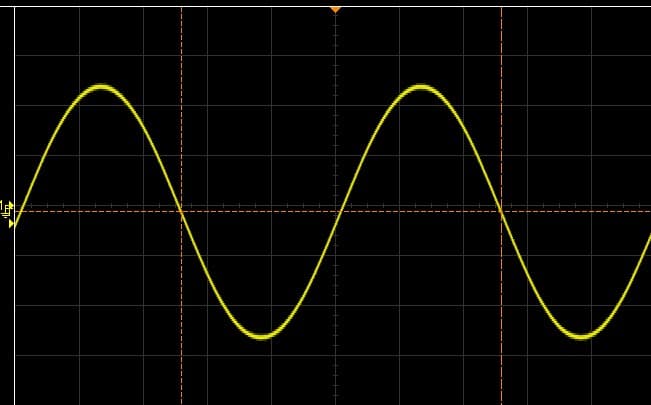
3.1. AC – peak, peak-to-peak, average, RMS
The ‘3.1 AC – peak, peak-to-peak, average, RMS‘ course, the first course of the Measurements section at Hamshack.ca, utilizes the Question Specific Learning (QSL) method to demystify the principles of alternating current (AC) measurements, an essential topic for those in electrical engineering and electronics. This chapter focuses on the various amplitude dimensions of AC signals, including peak, peak-to-peak, average, and RMS (Root Mean Square) values, which are instrumental in the accurate analysis and interpretation of AC waveforms. Highlighting their practical application, the course discusses the calibration of AC voltmeters and the use of Ohm’s law in AC circuits. Through this exploration, learners acquire a thorough understanding of AC voltage and current measurement techniques, setting a solid groundwork for advancing in electronics and electrical system studies.
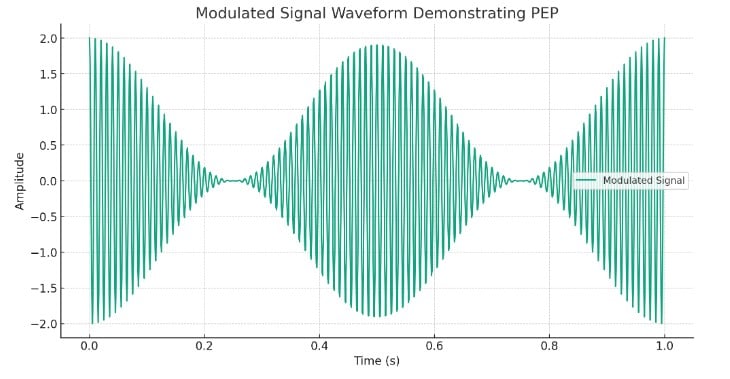
3.2 PEP, PEP relative to average power, PEP relative to the voltage across the load
The ‘3.2 PEP, PEP relative to average power, PEP relative to the voltage across the load‘ course, part of the Measurements section at Hamshack.ca, is crafted using the Question Specific Learning (QSL) approach to deepen the understanding of transmitter power dynamics in amateur radio operations. This chapter focuses on Peak-Envelope Power (PEP), a key metric for gauging the maximum power output of radio transmissions. It guides learners from basic amplitude measurements to intricate calculations of PEP in various scenarios, aiming to enhance the operator’s proficiency in accurate power assessment and adjustment. The course covers vital techniques for measuring voltage across dummy loads, translating peak-to-peak measurements to RMS values, and comprehending how these metrics influence transmission quality and compliance with regulations. By the conclusion of this chapter, amateur radio operators will possess a robust understanding of how to manage transmitter power effectively, ensuring their broadcasts are not only clear and efficient but also within the bounds of legal requirements. Through detailed exploration and practical examples, operators are equipped with essential skills for optimizing transmission performance and elevating their amateur radio practices.
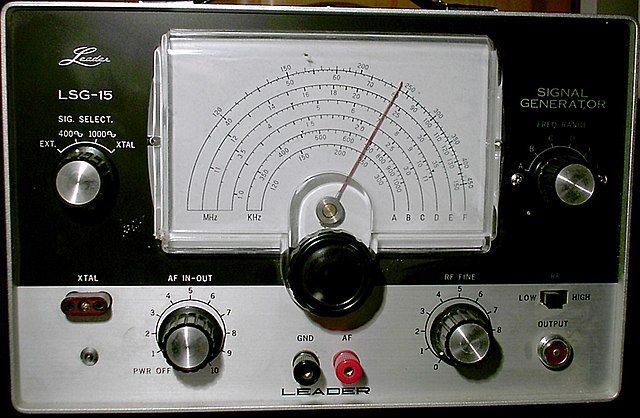
3.3. dip meters, signal generator
The ‘3.3 Dip Meters, Signal Generator‘ course, part of the Measurements section at Hamshack.ca, is designed with the Question Specific Learning (QSL) approach to demystify the use and significance of dip meters and signal generators in ham radio and electronics. This chapter provides a deep dive into the function and application of dip meters—variable frequency oscillators with metered feedback current—emphasizing their role in detecting resonant frequencies within circuits. It showcases the utility of dip meters in amateur radio setups for assessing resonant frequencies of antenna traps and tuned circuits. Furthermore, the course introduces signal generators as indispensable tools, acting as high-stability oscillators capable of emitting a wide range of frequencies and amplitudes, essential for the testing and calibration of electronic devices. By mastering the operational nuances of dip meters and signal generators, ham radio enthusiasts and electronics professionals can enhance their capability in precise measurement, testing, and adjustment of equipment, ensuring peak operational efficiency.

3.4. crystal calibrator, marking generator, frequency counter
The ‘3.4 Crystal Calibrators, Marking Generators, and Frequency Counters‘ course, a crucial installment in the Measurements section at Hamshack.ca, adopts the Question Specific Learning (QSL) methodology to explore essential tools for precision in ham radio operations. This chapter introduces learners to the critical roles of crystal calibrators, marking generators, and frequency counters in the realm of amateur radio, emphasizing their importance in frequency measurement and calibration. Crystal calibrators serve as steadfast frequency references, crucial for the verification and fine-tuning of radio equipment’s accuracy. Marking generators play a key role in the alignment and testing of receivers by providing marker signals at predetermined frequencies. Meanwhile, frequency counters are indispensable for accurately measuring electrical signal frequencies, ensuring operators stay within their allocated frequency bands and maintain effective communication. By understanding the functions and applications of these devices, amateur radio operators can achieve mastery in their craft, guaranteeing their equipment is precisely calibrated and operates at peak performance.

3.5. Oscilloscope
The ‘3.5 Oscilloscope‘ course, integral to the Measurements section at Hamshack.ca, leverages the Question Specific Learning (QSL) methodology to equip learners with the knowledge and skills to effectively use oscilloscopes in ham radio. This chapter underscores the importance of oscilloscopes for visualizing and analyzing electronic signals, allowing operators to delve into the waveform’s frequency, amplitude, and phase characteristics. It provides a comprehensive guide on interpreting oscilloscope readings, an essential skill for diagnosing equipment issues, aligning transmitters and receivers, and maintaining signal quality. Topics covered include reading Lissajous patterns, acknowledging oscilloscope accuracy limits, enhancing frequency response, and applying oscilloscope use in specific scenarios like signal quality assessments and phase difference evaluations. By understanding the functionalities and applications of oscilloscopes, amateur radio operators and electronics enthusiasts can improve their troubleshooting capabilities and ensure their equipment operates at optimal performance levels.
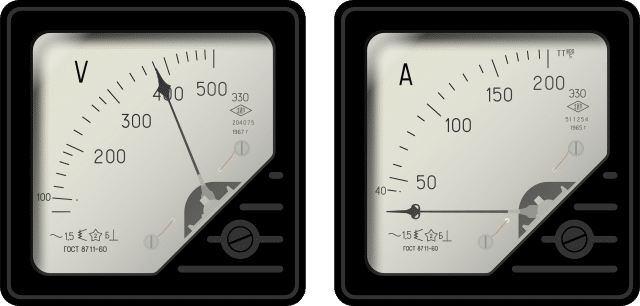
3.6. meters, multimeter, power meter
The ‘3.6 Meters, Multimeter, Power Meter‘ course, concluding the Measurements section at Hamshack.ca, incorporates the Question Specific Learning (QSL) approach to offer an in-depth examination of critical electrical measurement tools. This chapter zeroes in on meters, multimeters, and power meters, highlighting their indispensability in ham radio operations. It covers the principles of extending meter range using shunt and series resistors, the significance of ammeter and voltmeter sensitivity, and their application in accurately measuring current, voltage, and RF power. With a focus on both theoretical underpinnings and practical utility, the course aims to provide learners with a solid foundation in utilizing these instruments effectively across various settings. This ensures precise and dependable measurements, pivotal for achieving excellence in both amateur and professional radio communication environments. Through detailed explanations, real-world examples, and practical calculations, participants are empowered to master the use of these essential measurement tools, enhancing their technical skill set and operational efficiency in the field of electronics and radio communications.
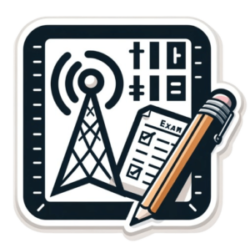
Measurements Exam
Advance your radio measurement skills with hamshack.ca’s 8.1.3 Measurements Practice Exam. This specialized exam is part of the Advanced Amateur Radio courses, designed to test your knowledge of AC characteristics, power measurements, calibration tools, oscilloscope operations, and various measuring devices. Essential for anyone seeking to excel in Advanced Amateur Radio licensing, this practice exam with its 25 question selection offers a thorough approach to mastering measurement techniques. Enhance your practical radio measurement capabilities today and move one step closer to certification success.
Hamshack.ca provides original, Canadian-focused amateur radio training through its Basic and Advanced Courses, along with new courses currently in development. All instructional text, explanations, diagrams, illustrations, quizzes, assessments, and related materials have been developed exclusively for Hamshack.ca learners and form a complete proprietary educational system.
© All course content—including lessons, graphics, instructional methods, practice exams, and supporting materials—is fully copyrighted and protected under intellectual property law. Users receive a personal, non-transferable license to access the material for their own learning. Copying, sharing, redistributing, republishing, or using any part of the course content for commercial or instructional purposes is strictly prohibited without written permission from the site owner.
For full details on usage rights and restrictions, please refer to the Hamshack.ca Terms of Use.
